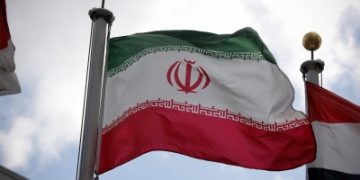Prof. Yogesh Pratap Singh & Madhubrata Rayasingh
Importance of the MSME sector to Indian economy can be gauged by the fact that this sector accounts for 30 per cent of the GDP, 45 per cent of the employment and almost 50 per cent of the exports. But it is equally true that 94 per cent of them are micro and unregistered, and only 7 per cent have access to institutional borrowing; and more than 80 per cent are self-financed.
Be it any economic experiment or a public health emergency, it’s the micro, small and medium enterprises (MSMEs) that are the worst-hit and strangulated to death. Already facing the brunt of economic uncertainties, Covid attack brought this sector on ventilator. Then, the Union Government started an oxygen therapy to provide immediate measures for survival, not medium- and long-term measures for revival and growth. Only a strategic big push can rescue the ailing labour-intensive MSME sector from the low- income equilibrium trap in the context of the quarantined economy.
In this light, the question whether the Atmanirbhar stimulus (bail out) package provides enough oxygen for this sector to survive needs to be introspected and analysed. The most=highlighted measure announced for the MSMEs is the emergency credit of 3 lakh crore backed by 100 per cent government guarantee. Is this enough of an antidote for the sector to even survive? First, the irony is that government and PSUs owe more than 5 lakh crore to MSMEs; and according to various chambers of commerce, the amount is higher — more than 6 lakh crore.
Announcement of a measure to expedite the payment, what is due to them, would have been a better stimulus and would have boosted their confidence in the system.
Second, many economists have expressed their apprehensions that despite 100 per cent government guarantee, the risk-averse bankers may not extend the loan benefits to all MSMEs, given the status of the MUDRA loans today. Even if RBI had taken steps to provide liquidity to the banks and even a drop in reverse repo rates, fear of investing agencies for providing bad loans will loom large in their minds. So the stimulus that was announced may never reach most of the beneficiaries.
Third, the government announced that the scheme will be beneficial for around 45 lakh MSME units in green zones, having no due loans and applying for fresh loans. This means, 5.8 crore units out of the total of around 6.3 MSME crore units existing today cannot avail any stimulus benefit like collateral free loan, credit guarantee, subordinate loan or fund of funds.
First, the government should have taken more steps to revive demand by putting money in the hand of the needy like direct cash transfers of higher amount in Jandhan accounts. Even announcements regarding salary support for the staff and workers would have made a significant difference. One of the major ambitions behind the fiscal package is to stimulate demand so that economy does not remain in stagnation. So, it is but obvious that even though the self-reliant measures announced is a welcome step and would offer some meaningful economic respite, yet it would not result in an immediate increase in aggregate demand in the economy.
There is this lack of effective demand which needs immediate intervention, failing which, a fall in output, employment and income are inevitable. On the other hand, no business firm will take fresh loans to start or continue production unless they are certain about the demand prospects.
Second, the government should take prompt measures in paying back their dues which come to more than Rs 5 lakh crore. Third, the state government deals with MSMEs on a regular basis. Clearing the state’s share of GST dues which is around Rs 30,000 crore immediately and allowing higher borrowing limit to the states will be steps in the right direction.
Changing the definition of MSMEs and disallowing global tenders for government procurement upto 200 crore are welcome steps. The change in the definition will allow them to grow without losing benefits of being MSME. And disallowing global tenders will create demand for their products. But these are more of revival features rather than the survival strategies. The government has to take a call on the tradeoff between survival and revival. Whether the MSMEs survive the effects of a lockdown to stand up and grow at a later stage is still difficult to predict. The abysmal track record of Modinomics does not provide any promising symptom.
The writers are professors of law and economics at NLU, Odisha.






































